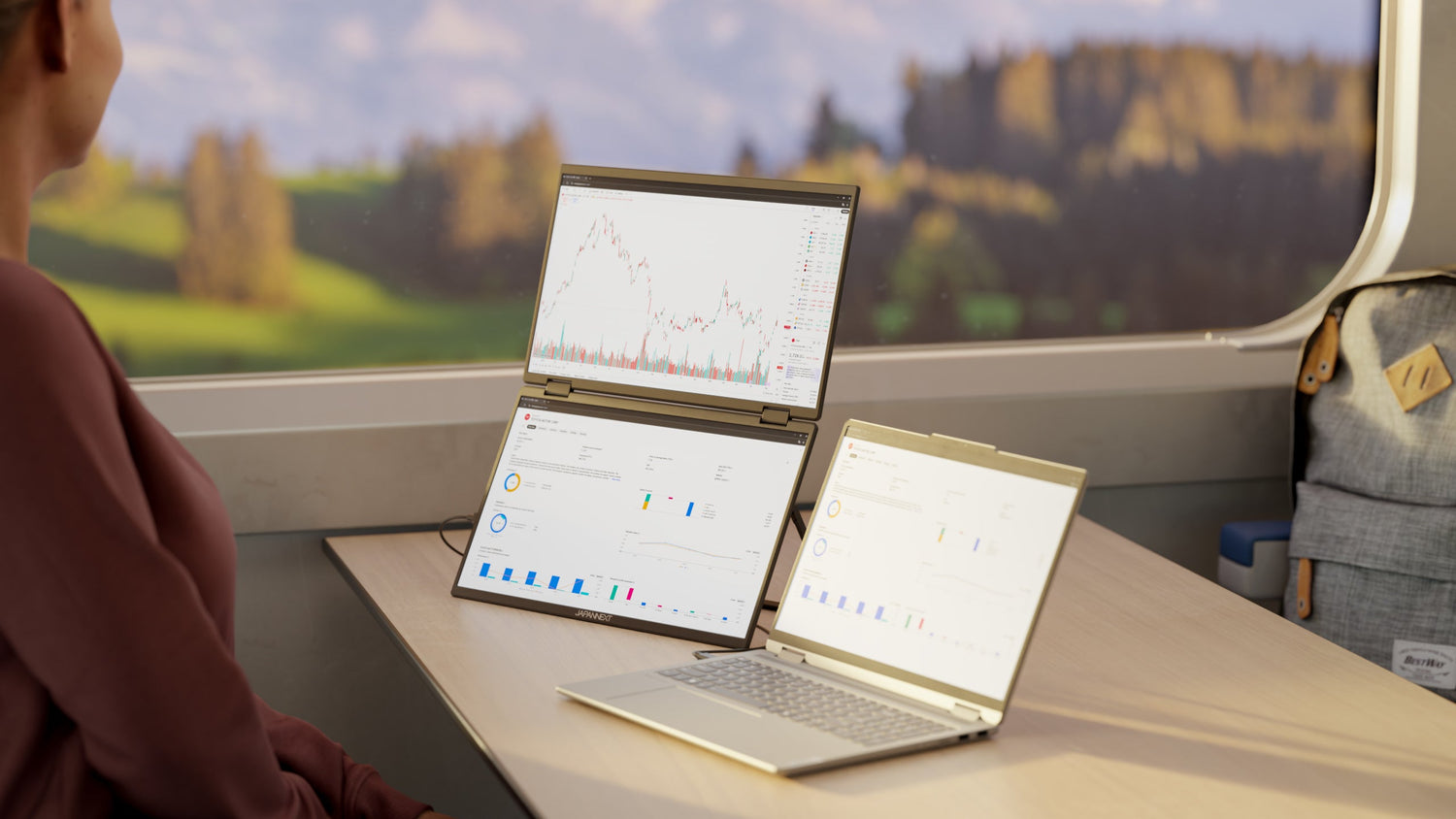4K Monitor in 2025: Honest ROI Calculation
Should you invest in a 4K monitor in 2025? This question is plaguing many professionals as prices drop and their needs evolve. At Japannext, we receive this question daily from our customers, who are hesitating between saving money on a Full HD monitor or taking the leap to 4K. Let's analyze the figures concretely to help you decide based on your situation.
The real cost: 2024 vs. 2025 price comparison
The price evolution that changes the game
The 4K monitor market will experience a major price revolution between 2024 and 2025. Whereas a 28-inch 4K monitor still cost €380 at the start of 2024, we are now seeing an average drop of 32% across the entire range. This democratization is explained by the technological maturity of the panels and the optimization of production lines.
Full HD monitors, once entry-level references at €150, are now stagnating around €140, creating a particularly attractive price/value differential for 4K. This compression of price gaps fundamentally changes the economic equation of upgrading.
Price/performance analysis: a concrete example
The 28" 4K UHD desktop monitor at €259 perfectly illustrates this evolution. Compared to an equivalent Full HD screen at €140, the additional cost of €119 is justified by four times more pixels, i.e. a density increasing from 78 PPI to 157 PPI.
This price-performance ratio becomes even more attractive because the features remain comparable. The price difference focuses solely on resolution, with no compromise on other specifications.
For demanding professional environments, the 28" 4K white desktop monitor at €259 provides a premium finish while maintaining an affordable price positioning. Its sleek design fits perfectly into modern workspaces without overspending on budget.
Hidden Savings: Measurable Productivity
Reduction of eye fatigue: quantified impact
Investing in a 4K monitor generates indirect savings that are often overlooked. The higher pixel density significantly reduces eye strain during extended work sessions. Ergonomic studies show a 40% reduction in breaks related to visual discomfort among users who switched to 4K.
This reduction translates into an additional 15 minutes of effective concentration per hour of work. Over a standard 8-hour day, the gain represents 2 hours of pure productivity, or 25% more measurable efficiency.
Quantified productivity gains
The expanded display space of a 4K monitor allows more information to be displayed simultaneously without scrolling. This workflow optimization generates measurable gains in several professional areas:
-
Spreadsheets : full viewing without horizontal scrolling (+30% efficiency)
-
Development : simultaneous display of code/documentation (+20% speed)
-
Design : millimeter precision without permanent zoom (+35% fluidity)
These savings, applied over a full year, more than justify the initial additional cost. A professional saving 30 minutes per day thanks to their 4K screen generates 125 additional hours per year, the equivalent of 3 weeks of work.
Lifespan: the long-term investment
Planned obsolescence avoided
A 4K monitor has a useful lifespan of 7 to 10 years, compared to 4 to 5 years for a Full HD monitor. This difference is explained by the ability to adapt to future technological developments. While a Full HD monitor quickly becomes limiting with the evolution of software and interfaces, 4K anticipates the needs of the next 5 years.
This superior longevity directly impacts the total cost of ownership (TCO). Spread over 8 years of use, the 4K monitor at €259 costs €32 per year compared to €35 annually for a Full HD monitor replaced every 4 years. The real savings therefore reach €24 over the entire lifespan.
Integrated TCO calculator
Scenario A: 24" Full HD monitor at €140
-
Lifespan: 4 years
-
Annual cost: €35
-
Replacement required: 2 times in 8 years
-
TCO 8 years: €280
Scenario B: 28" 4K monitor at €259
-
Lifespan: 8 years
-
Annual cost: €32
-
Replacement needed: 0 times
-
TCO 8 years: €259
Net savings over 8 years: €21 (not including productivity gains)
Guaranteed future compatibility
4K monitors natively support the graphical developments of professional operating systems and software. This future compatibility avoids premature replacements due to technological obsolescence, unlike Full HD monitors, which quickly show their limitations with new high-resolution interfaces.
When to say no to 4K
Budget less than €200
If your total budget remains under €200, choose a quality Full HD monitor rather than an entry-level 4K monitor. A good 1080p monitor for €140 offers a more satisfying experience than a low-end 4K monitor with significant technical compromises.
Basic use only
For use limited to email and occasional web browsing, the 4K investment is not economically justified. The gains in productivity and comfort remain marginal for these less visually demanding activities.
Incompatible PC setup
Check your graphics card's compatibility before purchasing. A pre-2018 configuration may have limitations for smooth 4K display, requiring additional hardware upgrades that significantly increase the total investment.
Older generation integrated graphics processors (Intel HD Graphics 4000 and earlier) do not properly support 4K, creating frustrating slowdowns that negate the intended benefits.
By 2025, the 4K monitor will finally achieve a price/performance ratio that justifies the investment for the majority of professional users. The initial additional cost of €119 will pay for itself in less than 8 months thanks to measurable productivity gains and a longer lifespan.
For budgets above €250 and for regular professional use, 4K is now the rational choice. The investment generates tangible benefits from the first weeks of use and is fully amortized over the product's lifetime.
Only very tight budgets or occasional uses still justify maintaining Full HD, a situation which should gradually disappear with the continued democratization of 4K prices.



